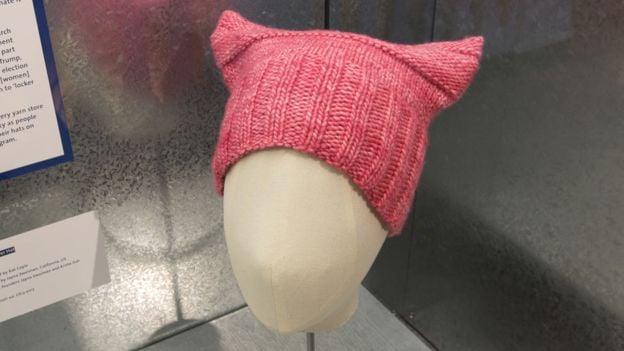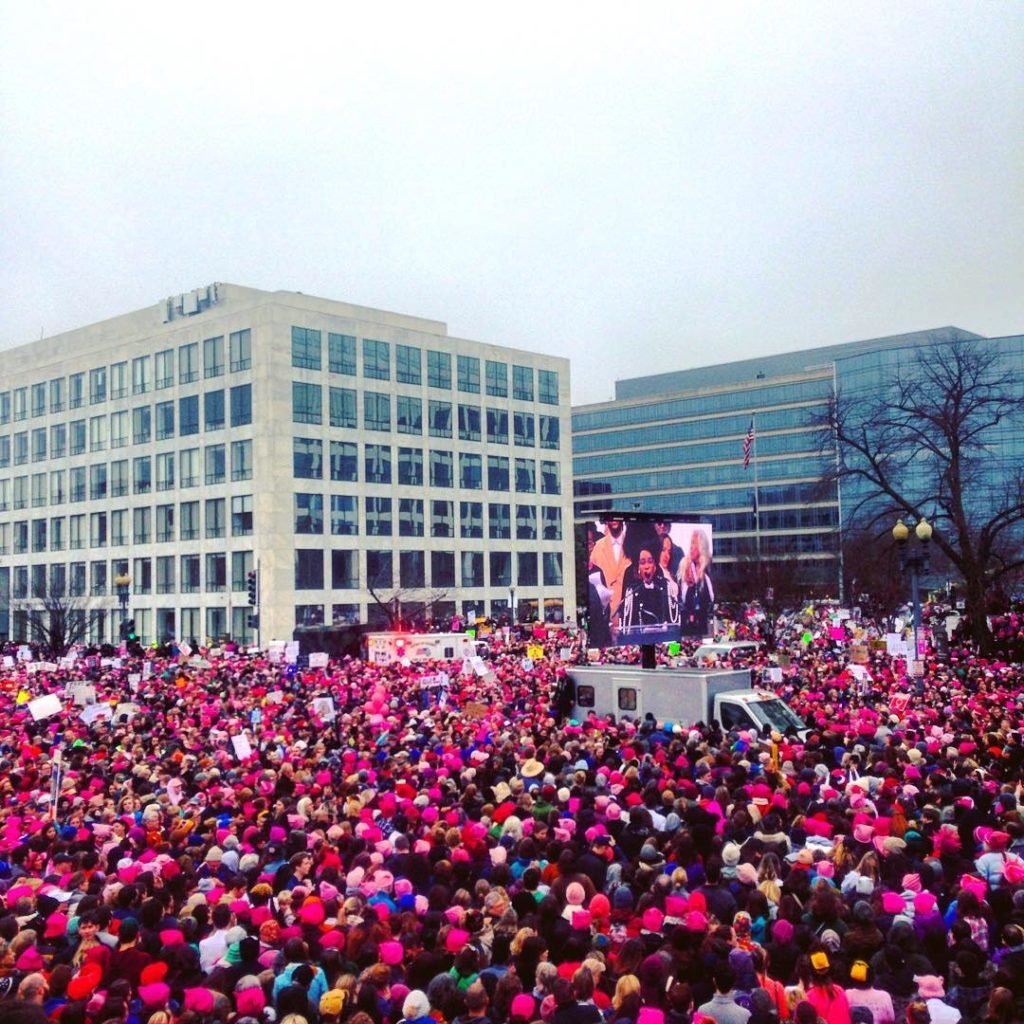Politics
The Pussyhat, Beloved Icon of Women’s March, Enters the V&A’s Permanent Collection
The feminist symbol has achieved staggering popular currency in a short time.

The feminist symbol has achieved staggering popular currency in a short time.

Sarah Cascone

A simple fashion accessory became a powerful symbol on January 21, as women around the globe gathered en masse to protest the inauguration of President Donald Trump for the Women’s March. Many were wearing pink pussyhats, with little cat ears, a sartorial reference to the former reality star’s infamous hot mic remarks about how his fame allowed him to get away with groping women.
Just in time for International Women’s Day, which sees women around the world striking from work as a followup to the march for A Day Without a Woman, the Victoria and Albert Museum in London has announced the acquisition of one of those thousands of handmade pink hats, the BBC reports.
The pussyhat became “an immediately recognizable expression of female solidarity and symbol of the power of collective action,” said museum curator Corinna Gardner in a statement, calling it “an important acquisition.”

A pink pussyhat knitted by Jayna Zweiman, co-founder of the Pussyhat project, on view at the Victoria and Albert Museum in London. Courtesy of the Victoria and Albert Museum, London.
The specific hat now on view at the museum was knitted by Jayna Zweiman, who co-founded (with Krista Suh) the Pussyhat Project, which successfully turned the world’s many women’s marches into a sea of pink.
The Los Angeles-based duo worked with a local yarn shop owner Kat Coyle to develop a downloadable pattern for the pussyhat, allowing marchers around the world to create their own. The design went viral and was widely shared on social media and popular knitting community site Ravelry.
Over four million people in 600 cities reportedly joined the march. Many of the demonstrators proudly sported the feminist design, giving it astounding popular currency.
The Pussyhat was sighted on the runway for Missoni during Milan Fashion Week. Today several hundred people are staging a Pussyhat “knit-in” at Swiss parliament for International Women’s Day.

Part of the crowd, many wearing pink pussy hats, at the Women’s March in Washington, DC. Courtesy of Sarah Cascone.
The V&A Museum acquired the hat as part of its Rapid Response program, which aims to bring objects related to current global and political events into the permanent collection in near-real time.